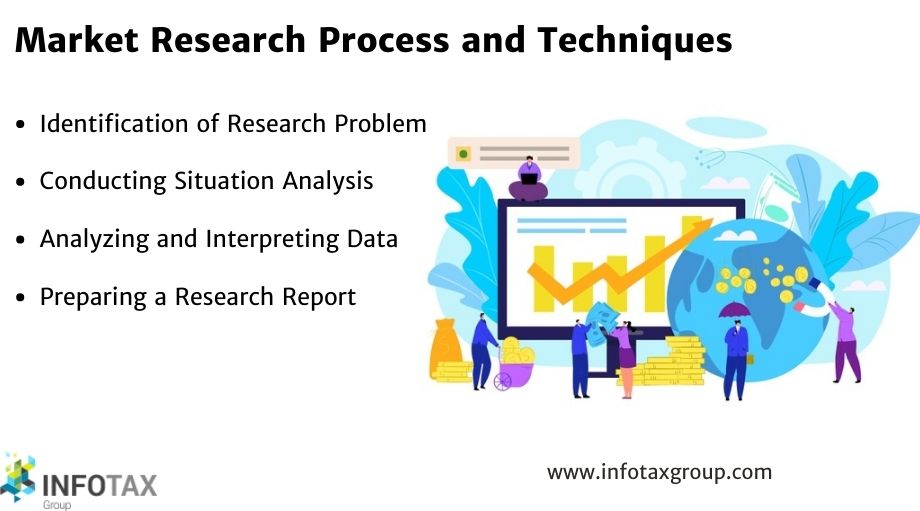Market Research is a useful tool that is used to identify various market requirements with the help of data. It’s data-based research that helps companies to develop market strategies and evaluate their business decisions.
In today’s dynamic business environment, the business requirements of the market are changing every day. Hence, it is important to do a proper evaluation before making any final plan.
Companies should not develop marketing strategies without backing them with proper data and research. It acts as a catalyst in making informed business decisions.
Must Read: How to be meeting companies before doing business in India ?
However, we often hear that companies aren’t keen on spending on market research. If a company is set to launch a new product or enter a new market without doing any market research, it can turn out to be a bad decision.
It’s a myth that market research is an expensive process. If carefully planned, it can offer amazing insights to take the right business decisions.
Let’s review the five-step market research process adopted by the companies below.
Identification of Research Problem
This is one of the most important steps of doing any kind of market research. In simple terms, you can find a solution only if you have identified the problem. You can conduct research and collect the required data after identifying the problem.
The problem identification will also determine what information is required and identifying the sources for getting that information.
Must Read: How to find reputed buyers for your products and services?
This approach will help your organization in addressing the problem or opportunity in a strategic manner such as getting clear insights on how to launch an existing product in a new demographic.
To identify a problem or an opportunity, first develop a set of questions that helps in defining your problem. Examine all the potential causes so that research can be shaped in a manner to provide the required information in resolving the problem.
Secondly, determine the actions required to resolve that problem or opportunity. For example, if your problem is to identify your target market then you can have the following questions:
- Questions related to the buyer demographics
- Questions related to their occupation, age, and gender
- Which key qualities are customers looking for in your product?
Consider various variables and causes and try to gather as much information as possible to get a clear understanding of your target market.
Conducting Situation Analysis
Once you have identified the problem with the help of questions, you need to conduct a situation analysis which includes the research and analysis of the competitors, target market, business challenges, and the competitive differentiators of your company. The depiction will provide a clear picture of the marketplace.
Conduct a SWOT Analysis to identify the strengths, weaknesses, opportunities, and threats of your company. This will help you in determining the target areas to focus your marketing efforts.
The next step after identifying the problem is to develop a research plan. It may include various methods which help you in answering the research problem.
Let’s review some of the best techniques for conducting market research below:
Survey
–Conduct a market survey using various tools such as Survey Monkey.
User tests
Running a user-test on your websites and landing pages is one the most cost-effective research method. It provides clear insights and data on the behavior of new/potential customers towards any new product launch, new messaging, new service, new ad, or a modified product you are planning to launch in the market. Simple A/B tests can help in understanding user behavior. Also, various website analytics tools such as Google Analytics or HubSpot Analytics or heat mapping tools such as Lucky Orange and Hotjar can be used to generate the desired results.
Secondary data
You can also use secondary data to conduct market research. This data is collected by someone else who has researched a similar problem. It is easily available with different market research companies. It will help you in saving time and resources you have allocated for conducting the primary research.
Interview prospects and customers
It is one of the best methods to gain real-time insights into your problem. You get feedback directly from the real customer. Either create various focus groups or conduct one-on-one interviews with the selected prospects.
Planning Formal Investigation
Usually, marketing research offers qualitative data as compared to quantitative data. This data is both meticulous and experimental.
Ideally, you will collect a mix of two types of data, for example, the A/B test conducted on your website to check whether a new pricing tier would help you in increasing your business or not.
In this research, you can also interview many customers to understand their views on the new pricing tier. Using two methods will help you to gain qualitative data offering better insight.
Ensure that you are collecting unbiased and valid data through your research. Do ask questions that may influence an interviewee’s mind. It is best to ask both open-ended and closed-ended questions, for example, a multiple-choice question asking their age group or occupation.
Analyzing and Interpreting Data
Now the fun part of the research process- Analysing and Interpreting data begins.
It is important to look at the trends and not any single piece of information to derive conclusions. Do not create any assumptions before you have analyzed the data completely.
Prepare a research report and summary. It includes the results, process, methods, analysis, and conclusions. Interpret the data to articulate the recommended solutions for the identified problems.
It is useless to share charts or data if doesn’t lead to any conclusion. If you made any wrong decision it could have a major impact on your organization.
Preparing a Research Report
Once your research is complete, it’s time to conclude your findings, prepare a report, and act. Develop your marketing strategies and campaigns based on your findings use your findings to find solutions for your problems.
However, it doesn’t mean that the research is over. The trends are constantly evolving based on the business environment and customer demand. Analyze your data regularly to see where you can make improvements. It’s always good to keep a tab on the changing market dynamics, buyer persona, and industry trends to alter your marketing strategies accordingly.







